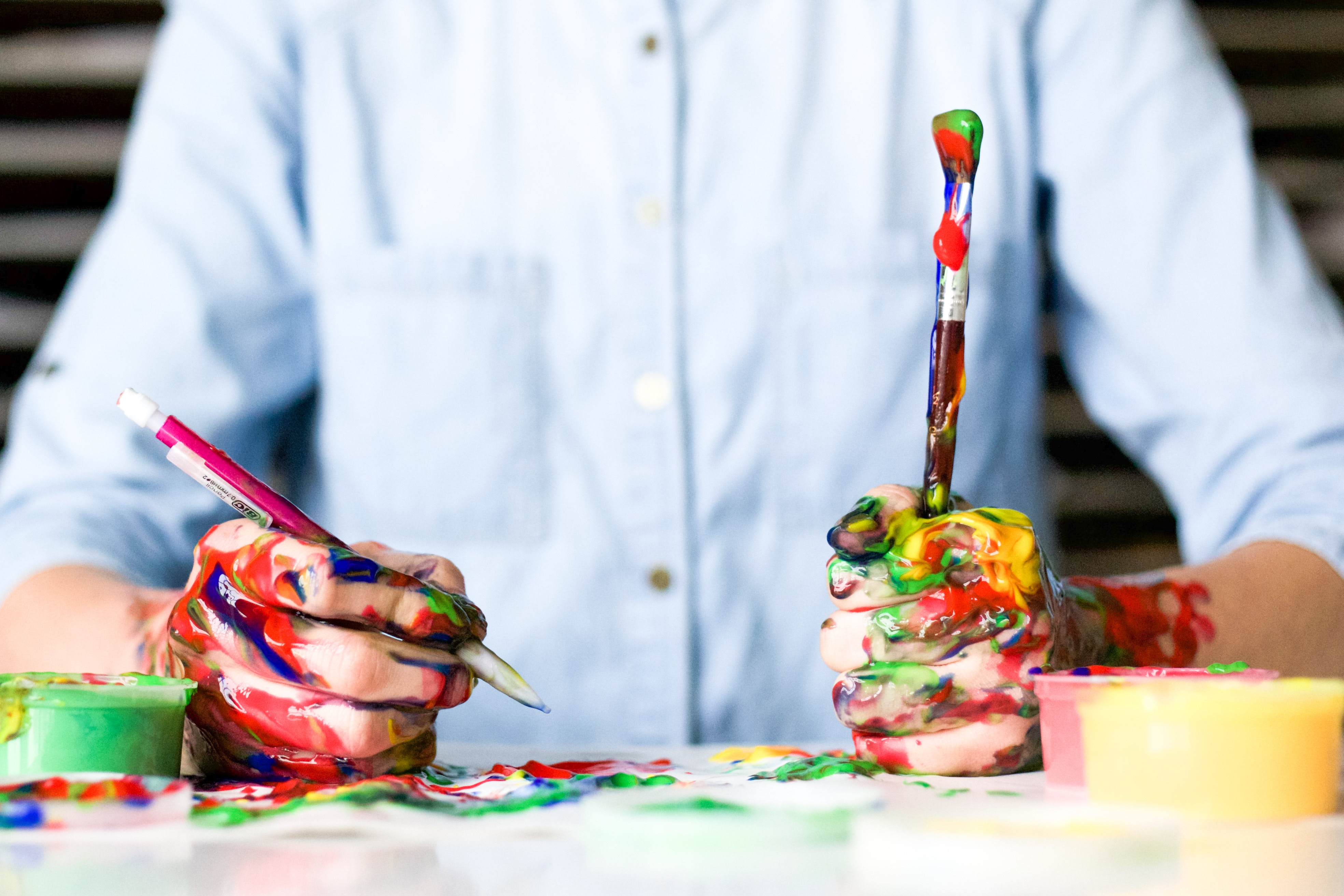A growing brain is a sign of a growing person. And this doesn’t just apply to kids. But they sure are great examples to look at when asking how to build your brain.
It’s true that kids—like adults—gravitate to repetition. But at the same time, their learning and development naturally puts them in a state of constant change. And all the while, those little brains are growing rapidly.
By contrast, as adults, we (too) often shy away from behavior change. Moreover, as we get older, we seem to increasingly gravitate to ruts. Same old house. Same old restaurants. Same old newspaper. Same old songs. Same old phone, apps, computer programs, etc. You get the picture.
But the more we avoid change, the more we forfeit a powerful force for staying sharp, maintaining memory, building a new and improved “neural tapestry,” and promoting absorption of new concepts and information.
To lay the groundwork before we move into some brain-building ideas and encouragement, let’s look at Brain HQ’s description of neuroplasticity:
“Brain plasticity science is the study of a physical process. Gray matter can actually shrink or thicken; neural connections can be forged and refined or weakened and severed. Changes in the physical brain manifest as changes in our abilities. For example, each time we learn a new dance step, it reflects a change in our physical brains: new “wires” (neural pathways) that give instructions to our bodies on how to perform the step. Each time we forget someone’s name, it also reflects brain change— “wires” that once connected to the memory have been degraded, or even severed. As these examples show, changes in the brain can result in improved skills (a new dance step) or a weakening of skills (a forgotten name)…Under the right circumstances, the power of brain plasticity can help adult minds grow. Although certain brain machinery tends to decline with age, there are steps people can take to tap into plasticity and reinvigorate that machinery. We just have to keep our brains fit with a series of targeted brain plasticity exercises.”
Every so often, I’ll catch an interview with someone who is over 90 or 100 years old, and he or she is still sharp as a tack. And I think, that’s how I want my brain to work when I’m in my 90s.
How about you? Do you want your brain to stay sharp now and throughout your life? Of course you do. Next question: How to build your brain like you did as a kid?
In the spirit of changing things up, I’ll answer that question with a blog post that’s quite a bit longer than my usual. So feel free to read half now and half later—just don’t miss the ideas and notes toward the end!
CHANGE: YOUR BRAIN-BUILDING WORKOUT TOOL
Let’s say you’re unaccustomed to physical exercise, but you’re determined to get in better shape. So you start a new exercise routine and stick with it. (Good work!) As you do this, your body adapts, your muscles adapt, and you become more healthy.
Changes in routine can be great for your brain as well. But many of us aren’t as cognizant of our brains as we are of our bodies. So instead of exercising our minds, we settle into ruts. And in effect, the brain atrophies like a muscle. This can happen at age 30 or 103.
Now, before we give routine too bad a wrap, let’s note that brain ruts serve a necessary purpose: You have certain habits so that you don’t need to re-learn everything from scratch every day. Imagine how cumbersome brushing your teeth would be if you had to approach it every night like it was your very first time. Anyone who has ever helped a 2-year-old with his toothbrush knows how messy that would be.
But while useful, ruts don’t build your brain.
Not long ago, scientists believed that brain cells didn’t regenerate, but we now know that our brains not only regenerate, they also adapt. Like a muscle, the brain can be trained to improve cognitive functions. Today, neuroscientists have discovered many tools that help keep your mind active, alive, and young, and most of them are related to change within the brain.
If you’d prefer that things stay the same, that’s okay; aversion to and avoidance of change are common attributes. But studies in neroplasticity reveal that your brain’s synapses—the pathways through which information flows among neurons—are actually invigorated by change. So whatever your attributes, you’ll want to give this a try in order to grow your brain.
“Think about what happens when you’re learning a new skill,” explains Dr. Joseph Mercola in an article on neuroplasticity and brain health. “The more you focus and practice something, the better you become, and this is a result of new neural pathways that form in response to your learning efforts. At the same time, your brain is undergoing ‘synaptic pruning’—elimination of the pathways you no longer need.”
STEP ONE: A SIMPLE CHANGE
As a first step, try a simple habit tweak that will reveal how your brain reacts and adapts to change. Tomorrow morning, try putting your pants on “backwards,” simply putting the other leg in first. (But be careful! This small change can shake up your brain so much that it might literally tip you over.)
Notice that you actually need to concentrate in order to get your pants on in this different way. It’s actually rather shocking. Now continue this for the next 2 weeks. After a week, you’ll notice that it’s much easier to get those pants on. After just a week and a half, you probably won’t even need to concentrate anymore to get the job done.
Just like that, you’ve built a new neural pathway.
If pants aren’t your thing, you can also change your wrist watch to the other hand, eat with the other hand, etc. Just pick a simple change, do it for a week, and note the incredible adaptability of your brain. Now just imagine what more change—or bigger changes—could do for the strength and adaptability of your mind.
3 RUT-BREAKING IDEAS FOR HOW TO BUILD YOUR BRAIN
If you’re sold on the healthy-brain benefits of forcing yourself out of ruts and into new pathways, then go bigger than pants with one of these (or some of your own) ideas:
1. Try learning a new language later in life. Research has shown that this can benefit intelligence, memory, and concentration—as well as lower the risk of dementia and Alzheimer’s.
2. Make an argument out loud in favor of a political position that you completely disagree with. This one has a 2-fold benefit: It will improve your neuroplasticity by getting you out of your typical thinking rut. But it will also give you a clearer understanding of the opposing viewpoint, which is likely to make your opinion more effective—and less inflammatory—the next time that same-old conversation comes up at the family picnic.
3. Take up a brand new musical instrument. Studies indicate that musical training can impact your brain’s structure dramatically, enhancing your memory, spatial reasoning, and language skills.
One tip for the Type A’s out there: If you’re just starting to exercise for the first time, it’s not a great idea to run a marathon on day one. Likewise, it’s not wise to start Spanish classes, piano lessons, and an autobiography of your most hated politician on the same day you move into a new home and start a new job.
I recommend you start with the pants, get excited about the progress you see, and then pick 1 of these other ideas to jump into first.
A NOTE ON UNWELCOME CHANGE
It’s worth mentioning that major change and adversity tend to yield incredible growth in our minds—even when that change is not something we initiated or would have chosen.
By nature, human beings seek and enjoy contentment—which is a good thing. But when we’re content, we don’t really grow. Now, we don’t need to be growing all the time; you wouldn’t sit down to watch a beautiful sunset in order to build your brain. You can (and should!) just sit and enjoy the sunset.
But a fact of life is that not every moment can be like a beautiful sunset. I have repeatedly coached people through major upheavals in their lives, and while they often fight anxiety in the midst of the transition, another truth emerges across the board: in the end, they rave about how much the experience re-charged their batteries.
So if you’re currently confronting a change you didn’t choose, remember that this experience—while possibly very difficult—can also have a highly positive, refining, revitalizing effect in the end.
And when you start to see that positive effect, please do me a favor: share your story. Whether your whole world has changed or you’ve just started putting your pants on differently, add a comment here, send me a note, or if you’re not comfortable with any of that, just tell a friend. Because we can all benefit from real-life reminders of just how healthy a dose of change can be.



